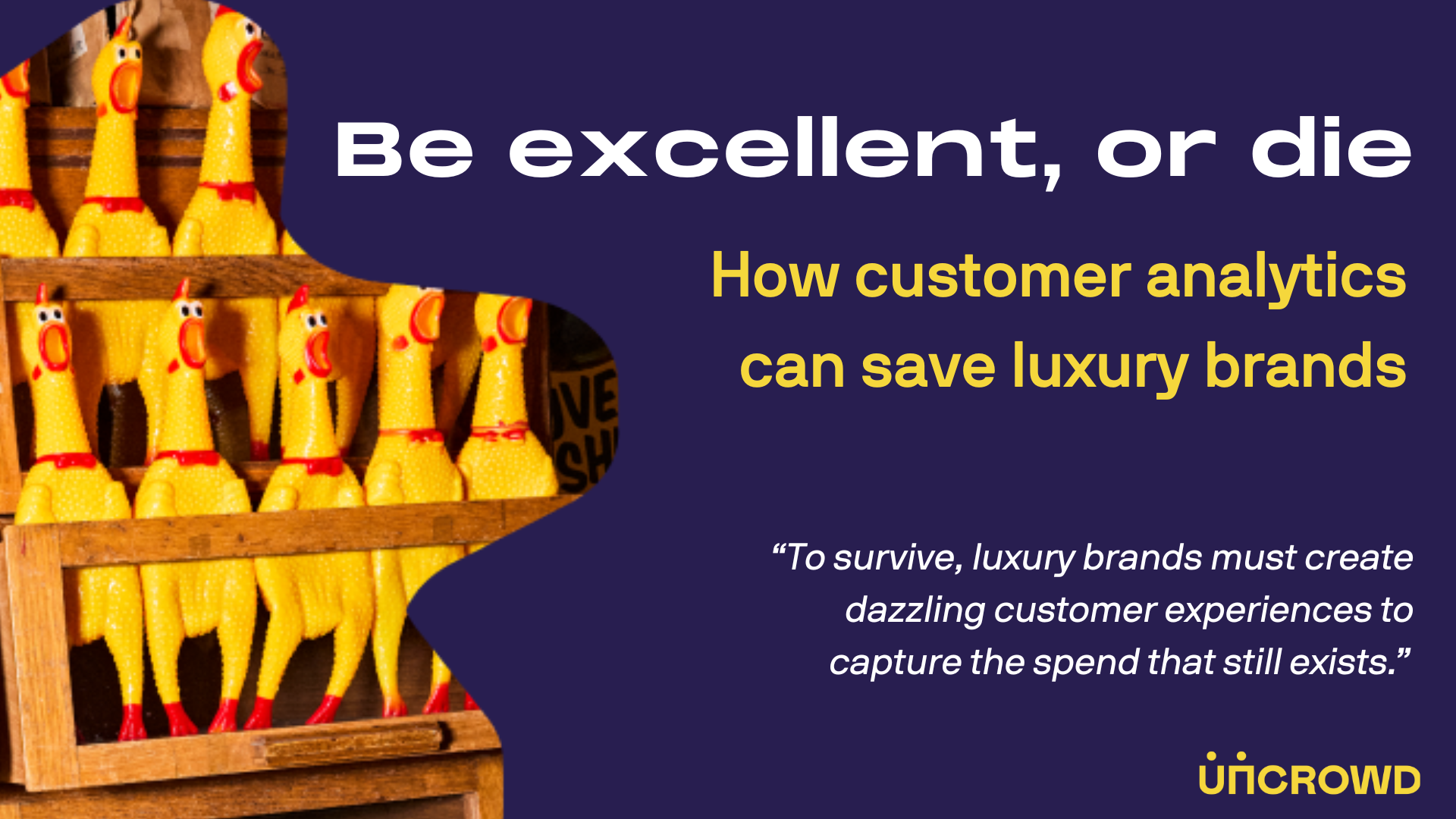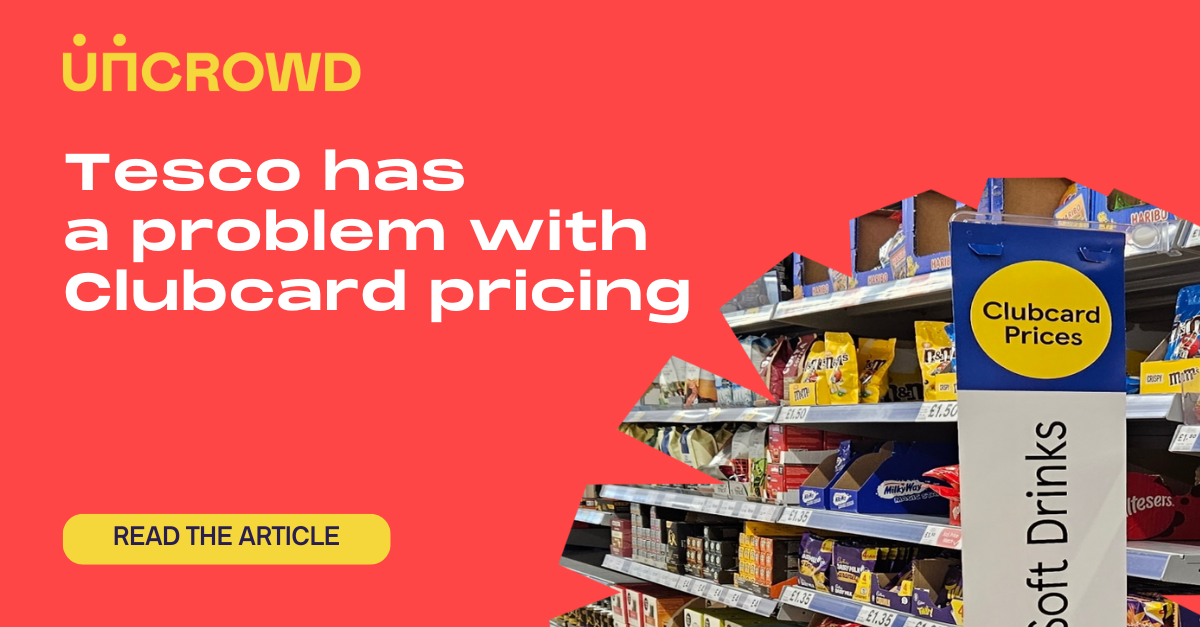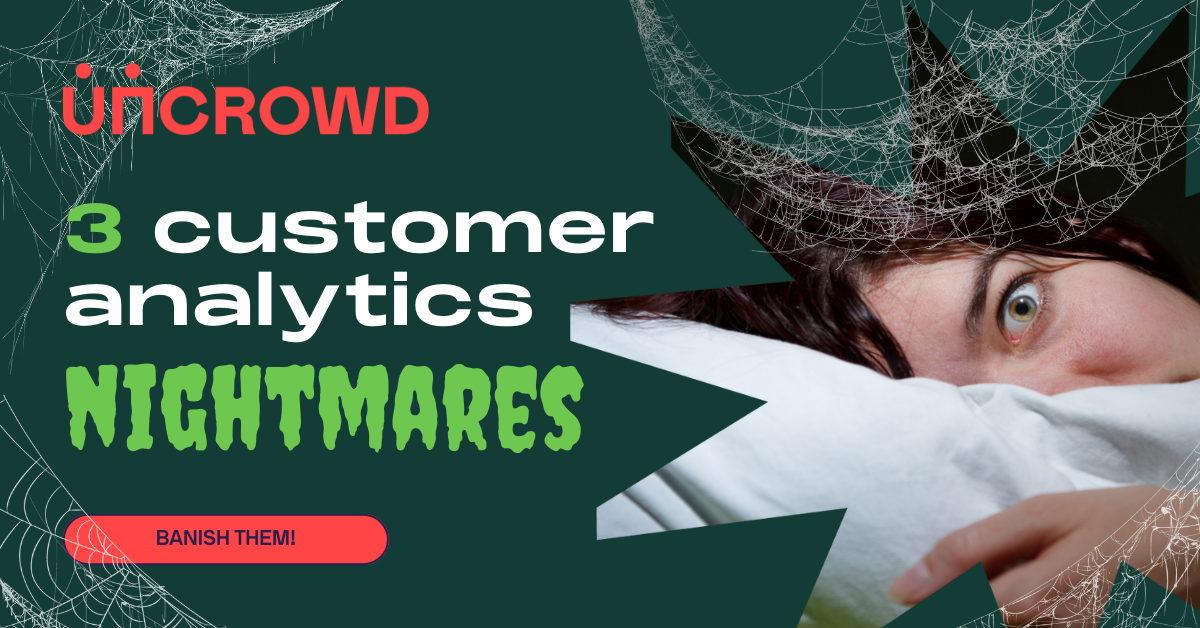How to predict customer behaviour when customers are unpredictable

We talk a lot about relative attractiveness (RA) at Uncrowd. Our business is about behavioural psychology at its heart — our platform analyses why shoppers make the choices they make. When we shop, we’re constantly assessing the relative attractiveness of one option over another.
Bought my first real 6-string
A customer wants to buy an electric guitar for their teenager. Do they choose to drive to the local music store, or do they order from an online retailer? Online = choice, delivery, and no need to put a coat on. The store = advice from knowledgeable staff and the buzz of supporting a local business. Which do they choose?
The choices we make in situations like this are not always the same. It might be different between one day and the next. The weather, our mood, our bank balance, how much stress we’re under at work, any of hundreds of variables influence the decision.
Come together
Some variables influence many people at once. In the UK, footfall on the high street dipped slightly in November 2021. Several variables were at play — cold weather, fears of the COVD Omicron variant, people doing their Christmas shopping in October to avoid supply chain issues being reported in the news.
Sometimes it’s tempting to look at these stats and read seismic shifts in human behaviour, when in fact our behaviour hasn’t really changed at all.
Big shifts were talked about a lot in the early days of the COVID pandemic — commentators predicted a permanent move to online shopping, the death of the high street, a swing to local suppliers away from supermarkets.
But these shifts were the result of specific variables in play at the time. Months down the line, we see those big shifts stabilising, trends reverting roughly to their pre-pandemic line.
The huge leap in online we saw during the pandemic as millions of people suddenly found online shopping relatively more attractive than visiting a store, is stabilising. Online shopping as a percentage of total retail sales has fallen rapidly again, returning roughly to the line it’s been following since the early 2000s.
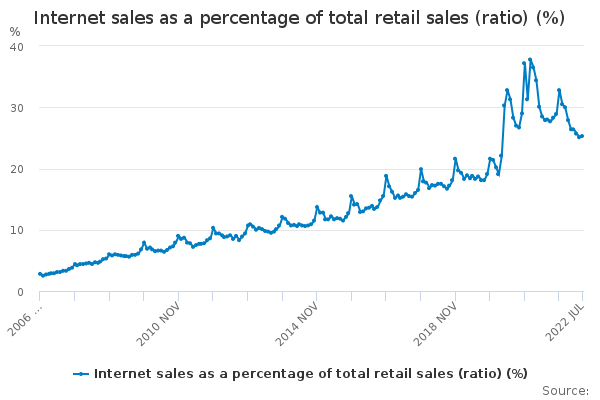
From a customer analytics point of view, we probably don’t have to look for a new normal. There isn’t going to be a major post-pandemic realignment of retail. Trends will continue as they were before. There may be some acceleration, but not much, long term.
Ch-ch-changes
Humans don’t change very much. A particular society-wide variable might cause us to act differently for a time, but generally, once things change, our behaviour reverts to the way it was before.
But relative attractiveness is volatile — it changes all the time. The choice we make today might be different tomorrow, when our circumstances change, or our mood, or the weather.
This is a problem for predicting customer behaviour. If you try to predict how one human will act, with all the hundreds of variables that impact decision-making in play, it’s virtually impossible. This is the elephant in the room with customer personas, those user-types that are meant to represent your typical customer. You can’t really predict where Miranda-the-Mum-of-Four or Priti-the-Price-Sensitive or the Owen-the-Online-Shopper will go to buy that electric guitar on a particular day.
When you build your offer based on fixed personas, you aren’t taking into account the different moods, needs, wants and circumstances that a person is in at different times, those variables that make them act differently. It’s a blunt one-size-fits-all approach. Try to build your business around Owen-the-Online-Shopper, and you’ll miss out on Owen’s business when he’s in the mood for reliving his youth with a test drive on a shiny Fender.
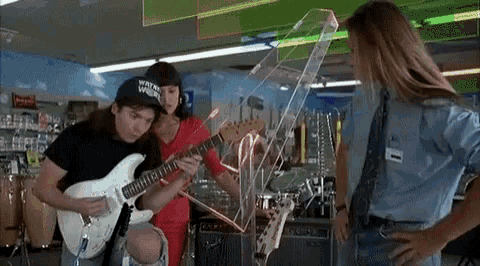
Go your own way
At Uncrowd, we don’t try to predict what choice a single human will make, or how an imaginary amalgam will act.
Instead, we identify groups of characteristics, wants and needs that exist around your business, regardless of which specific human is in those states at any given time.
We call these groups of variables Mindsets.
Once you’ve identified the key Mindsets that exist around your business, you can build to serve those Mindsets. When you effectively serve a Mindset by increasing your relative attractiveness (how attractive you are to customers compared to your competitive set), individual customers in that Mindset at a particular moment choose you more often.
Humans don’t change much, but that doesn’t make them predictable. Building your business based on predicted behavioural shifts is risky. Building on imaginary personas and their imaginary behaviour is risky. But building your business to be more attractive in a relevant range of situations means customers choose you more often.
